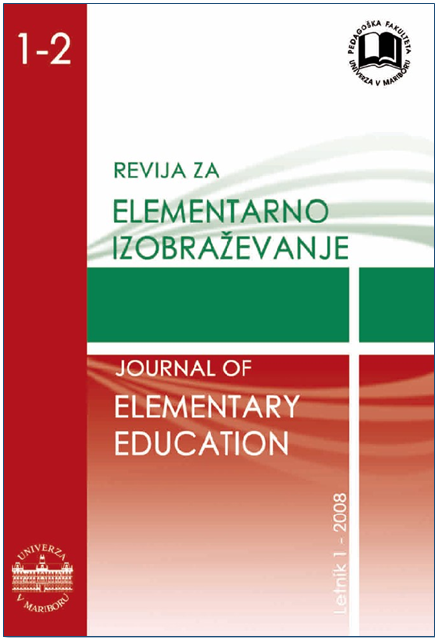Matematična anksioznost
Povzetek
Matematično anksioznost običajno definiramo kot občutek napetosti, zaskrbljenosti ali strahu, ki ovira storilnost/uspešnost pri matematiki. Čeprav se o vzrokih matematične anksioznosti raziskovalci še niso poenotili, pa lahko med dejavnike tveganja štejemo neustrezne stile poučevanja. Posledice matematične anksioznosti se kažejo na osebnem in akademskem področju. Najbolj prodorno je nagnjenje k izogibanju matematiki in matematičnim aktivnostim, kar oslabi posameznikove matematične kompetence in ovira karierne odločitve. S tega vidika je nujno, da učitelji razumejo vzroke matematične anksioznosti in učencem ustrezno pomagajo. Prispevek podaja pregled literature in omenjeni problem osvetli z vidika vzrokov, posledic, instrumentov za merjenje ter intervencijskih programov. Navedena so tudi nekatera znanstvena spoznanja, ki obravnavajo razlike v spolu in starosti glede na matematično anksioznost. Ker gre za dokaj običajen pojav tudi med učitelji razrednega pouka in lahko resno ovira njihovo poučevanje, se prispevek dotakne tudi tega vidika.
COBISS-ID: 16600584
Prenosi
Literatura
Amato, S. A. (2004). Improving student teachers's attitudes to mathematics. The 28th International Conference of the International Group for the Psychology of Mathematics Education, 2, 25–32.
Ashcraft, M. H. (2002). Math Anxiety: Personal, educational and Cognitive Consequences. Current Directions in Psychological Science, 11 (5), 181–185.
Ashcraft, M. H. in Kirk, E. P. (2001). The relationship among working memory, math anxiety and performance. Journal of Experimental Psychology, 130 (2), 224–237.
Austin, S., Wadlington, E. in Bitner, J. (2001). Effect of beliefs about mathematics on math anxiety and math self-concept in elementary teachers. Education, 112 (3), 390–397.
Baisse, W. H. (1993). Math Anxiety Workshop, 1993: A programe developed for the math anxious student at all levels, but predominantly at developmental levels. Pridobljeno 3. 4. 2008, z EBSCO HOST Research Databases.
Baloglu, M. in Kocak, R. (2006). A multivariate investigation of the differences in mathematics anxiety. Personalitiy and Individual Differences, 40, 1325–1335.
Barnes, A. in McCoy, L. P. (2006). Investigating the causes of math anxiety in the high school classroom. V L. P. McCoy, (ur.), Studies in teaching 2006 Research Digest: Research projects presented at annual research forum (13–18). Winston-Salem, NC: Wake Forest University.
Carr, A. (1999). The Handbook of Child and Adolescent Clinical Psychology: a Contextual approach. London, New York: Routledge.
Cates, G. L. in Rhymer, K. N. (2003). Examining the relationship between mathematics anxiety and mathematics performance: an instructional hierarchy perspective. Journal of Behavioral Education, 12 (1), 23–34.
Chiu, L. H. in Henry, L. L. (1990). Development and validation of the mathematics anxiety scale for children. Measurement and Evaluation in Counseling and Development, 23 (3). Pridobljeno 1. 3. 2008, z Academic Search Premier.
De Bronac Meade in Brown, R. (1982). Reduction of mathematics anxiety: A cognitive behavior modification approach. Pridobljeno 3. 4. 2008, z EBSCO HOST Research Databases.
Gierl, M. J. in Bisanz, J. (1995). Anxieties and attitudes related to mathematics in grades 3 and 6. Journal of Experimental Education, 63 (2). Pridobljeno 2. 3. 2008, z Academic Search Premier.
Gresham, (2007). A study of the mathematics anxiety in pre-service teachers. Early childhood Education Journal, 35 (2), 181–188.
Gutbezahl, J. (1995). How negative expectancies and attitudes undermine females' math confidence and performance: A review of the literature. Pridobljeno 3. 4. 2008, z EBSCO HOST Research Databases.
Hannula, M. S., Liljedahl, P., Kaasila. R. in Röser, B. (2007). Researching relief of mathematics anxiety among pre-service elementary school teachers. Proceedings of the 31st Conference of the International Group for the Psychology of Mathematics Education, 1, 153–157.
Copyright (c) 2008 Revija za elementarno izobraževanje

To delo je licencirano pod Creative Commons Priznanje avtorstva-Nekomercialno-Brez predelav 4.0 mednarodno licenco.
